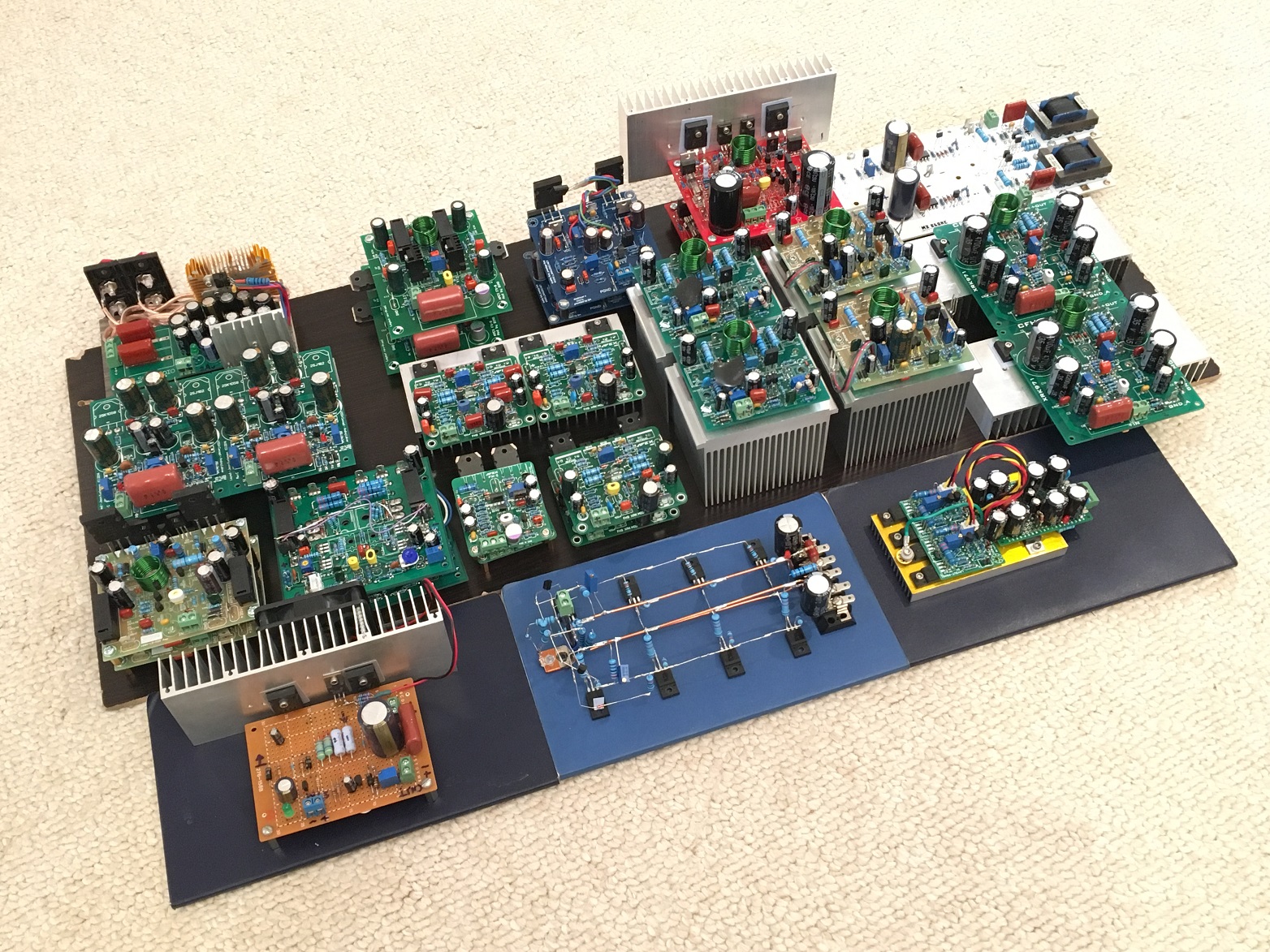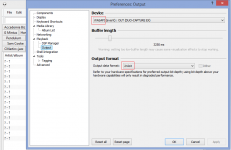See screenshots below. No DSP is active. Output is via HDMI to a Yamaha RX-V2700. Yamaha on processing bypass "Pure Direct"
OK. To me, it is a little bit non-transparent. I would recommend ASIO or WASAPI drivers and settings of foobar, there are plug-ins for foobar as well. If ASIO or WASAPI card driver is unavailable, then DS (direct sound), but in control panel the correct Fs and bit depth for the card used to be set, otherwise Windows will resample. It is much better to use resampler of foobar (DSP parameters) if the soundcard abilities and file format differ. Resampler allows to make a choice of Fs and bit depth.
Attachments
I was writing a long reply and my Internet collapsed ...
So shortly: I have asked again about summation of results because I did not know I can make a sum of results of 8 participants. To me it is not intuitive. In my previous question re results summation I was considering results of one and same person and I understood the results may be summed. Nothing personal, please.
I know, as stated before it can be counterintuitive sometimes.
But in this case did you realize the importance of the assumption?
The assumption of random guessing means that each participants could just have thrown a coin each time, so ask yourself would have problems to accept combining the results from coin flips done in different locations by different humans? (Each one using a perfect coin, that is the assumption)
P.S. you should know from all the years that i´ve no interest in personal fights
Thank god i was right... lol....
I felt something not so natural when the voice starts on apricot and a lack of dynamic somehow.
I felt exactly the same thing on 2 diferent setups... phones and amp...
Setup 1 - samsung galaxy s9 +audio technica studio headphones.
Setup 2 - raspberry pi+ tda1543 nos+ modulus 86 amp + jbl l830 monitors.
Off course, without foobar2000.
Once you have eliminating the different bottlenecks in the audio system we should all appreciate the differences when they are so evident, as happened with this test.
Off course, without foobar2000.
Foobar is no problem. Users are, who do not make a proper setting. Hints were repeated. If you made a simple loop you would know what your system is doing. By ears, it is just guessing.
I know, as stated before it can be counterintuitive sometimes.
But in this case did you realize the importance of the assumption?
The assumption of random guessing means that each participants could just have thrown a coin each time, so ask yourself would have problems to accept combining the results from coin flips done in different locations by different humans? (Each one using a perfect coin, that is the assumption)
I hope I have realized the importance of the assumption.
My problem is that I automatically supposed that users make tests of their systems. I can see that it is not the case so I think that you know what kind of conclusions I have made for myself. On the other hand, I think it may be a positive lesson for many participants, because shared experience almost never works, one has to go through himself and then it is forever. So, if 2 - 3 users have learnt something from this exercise, to me it was worth efforts.
So where does that leave your other listening test threads? Can you reliably say anything about those results? What about people who drew conclusions based on these results? What about future listening tests - how do you propose to run them?
Output is via HDMI to a Yamaha RX-V2700. Yamaha on processing bypass "Pure Direct"
I had the same expensive AV. It has a very good preamp but the sound when played good/very good music recordings was worse than my AV Marantz SR4500 (in my second system). AV Yamaha are very good with films but not with the music -> NOT EMOTION.
Last edited:
Yes, the digital processing differences that are coming to light are something I'm not upset about knowing nothing about 😛no wonder i like old analog stuff no DSP to worry about...scotch time!
I hope I have realized the importance of the assumption.
And what about the second question? 😉
I know you have no interest in personal fights. I had a feeling that you started to take my comments a bit personally. Not intended that way by me. I know I am often straightforward and "hard".
I would suggest to finish this and let's concentrate on the technical subject, if possible. Thank you beforehand.
I would suggest to finish this and let's concentrate on the technical subject, if possible. Thank you beforehand.
Those are not available for the HDMI output. I suppose I could set Foobar to resample to 48K.OK. To me, it is a little bit non-transparent. I would recommend ASIO or WASAPI drivers and settings of foobar..,.
But no matter. I used another sound card that does have ASIO and also another mic. Best I could do was H2 -55dB from the headphones. No other harmonics showing using ARTA.
Unfortunately I was not able to play from Foobar and analyze with ARTA at the same time so no comparisons of sine1 vs sineA. Will fiddle with settings to let you know. However, with that same sound card in ASIO mode I still failed the Foobar ABX. SPL was circa 75dbA
Hello,Off course, without foobar2000.
Once you have eliminating the different bottlenecks in the audio system we should all appreciate the differences when they are so evident, as happened with this test.
For me difference was very small, but it was there..
For example on the start of each track there is some background sounds...
On apricot they are more obvious but not so natural as avocado.
When the voice starts there is also difference avocado is better, more imediate.
But in conclusion i think PMA setup e very good. Very near to the original source...
So near that is very difficult to ear the differences...
Foobar is no problem. Users are, who do not make a proper setting. Hints were repeated. If you made a simple loop you would know what your system is doing. By ears, it is just guessing.
And of course all of this would have been revealed on the first test if you had included/used controls & not stumbled upon well down the road after running many such tests with many associated conclusions about the results
And what about the second question? 😉
not a statistic's guy and don't know if i'm in any way correct.
the "perfect coin" condition would only exist if each one of the participants had exactly the same gear to audition the files on.
the fact that we all have different gear should skew the results via divergence,no?(toward guessing)
Last edited:
And of course all of this would have been revealed on the first test if you had included/used controls & not stumbled upon well down the road after running many such tests with many associated conclusions about the results
On the other hand, how many users shall I convince to make a useful test of their systems? How many of them would be able to do it? If it was a condition, how many results would we receive? This is just how it is. Sighted impressions discussed in other threads are made without any system testing by users. If they make ABX, even on the sub-optimally set system, it tells at least something. Anyway, that's how they listen, right? When in a direct contact with audio lovers, I am always frustrated how low is the level of basic technical knowledge related to audio. It is like it is. It is no science, but a hobby. Like gardening. And I can make you sure that I make no definitive conclusions from these tests. It is a fun for many participants.
But in conclusion i think PMA setup e very good. Very near to the original source...
So near that is very difficult to ear the differences...
I disagree. Better with H2 at 70-75 dB.
With orchestral music, at least 80-85 dB.
Off topic or not
14 DIY amps made by xrk971.

Virtual Audition of Very Simple Quasi MOSFET Amp
And now my second system sound much better!
Days ago I read one that said that all its DIY implementations with the LM3886 sounded the same (expensive mod86 included). For me it was evident that he has a big bottleneck in his system that prevents him from appreciating the differences.
Comparing 2 Different LM3886 Amplifier Modules
14 DIY amps made by xrk971.
Virtual Audition of Very Simple Quasi MOSFET Amp
I heard ALL 14 amps.
1º F5 Juma. I love the sound.
2º VHex+ . It seems doped. Much bass, some anecoic sound. Maybe is the ideal with orchestral music.
3º Quasi. Sweet, warm. It needs more energy and highs. To listen vocal music.
I think that F5 Juma has the best of VHex+ and Quasi. Problem, to me, it has very little power to move my KEF Q100 speakers (86dB and 4.7 Ohms minimum). Am I wrong?
And yes, your speakers sound very bad with orchestral music.
And now my second system sound much better!
Days ago I read one that said that all its DIY implementations with the LM3886 sounded the same (expensive mod86 included). For me it was evident that he has a big bottleneck in his system that prevents him from appreciating the differences.
Comparing 2 Different LM3886 Amplifier Modules
Chris, I appreciate that you took your time and answer.
I built parallel86, modulus86, My_Ref Fremen Edition , my ref revC, lm4780 pa03, akitika gt101 and some other ones not worth mentioning here, all of these chip amps based on lm3886/4780. I cant say I liked one more than other one, for me all sounded kind of similar.
Maybe my ears are not so good as I was thinking they are, or maybe my audio sources are not that good.
I did not try the mod686, which I think is a different beast.
- Home
- General Interest
- Everything Else
- Can you tell original file from tube amp record? - test
